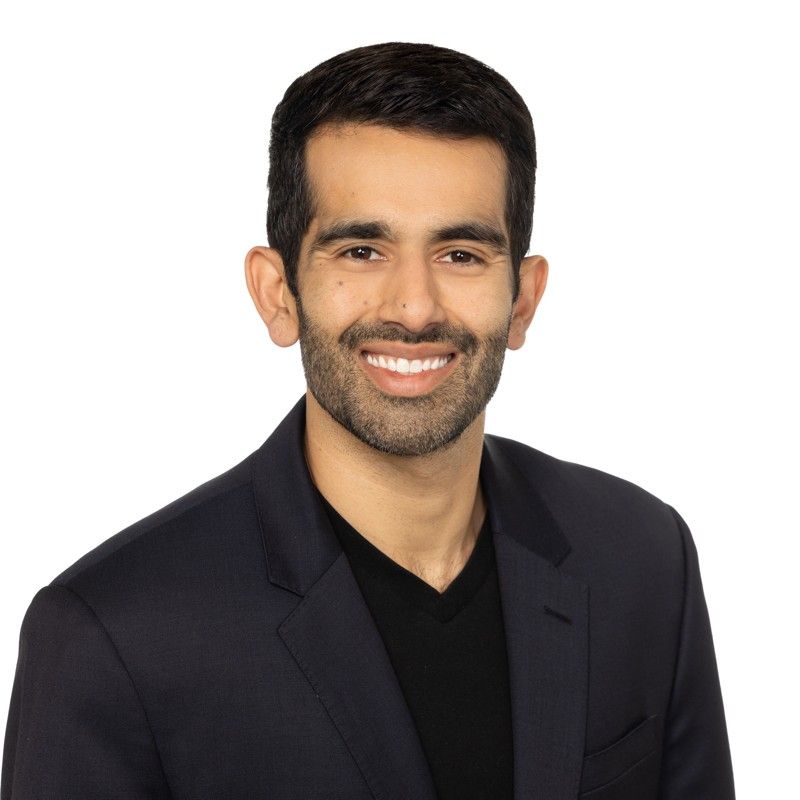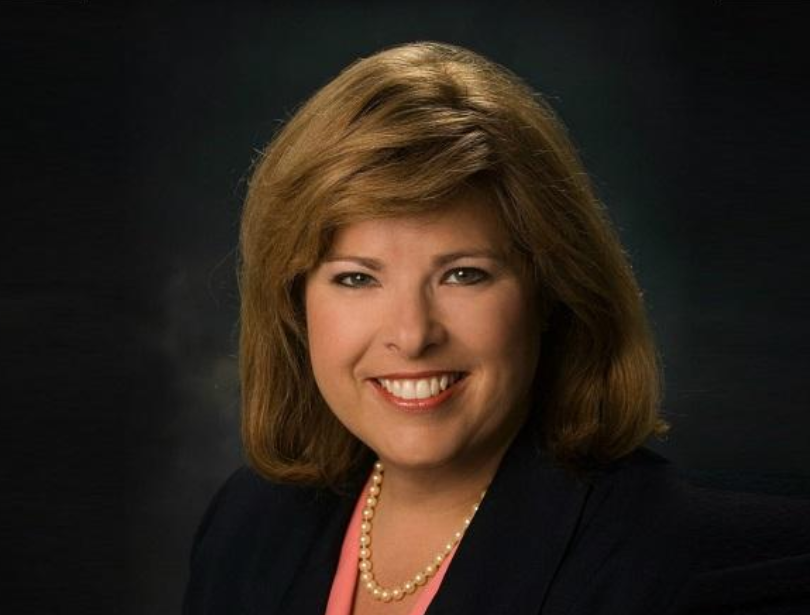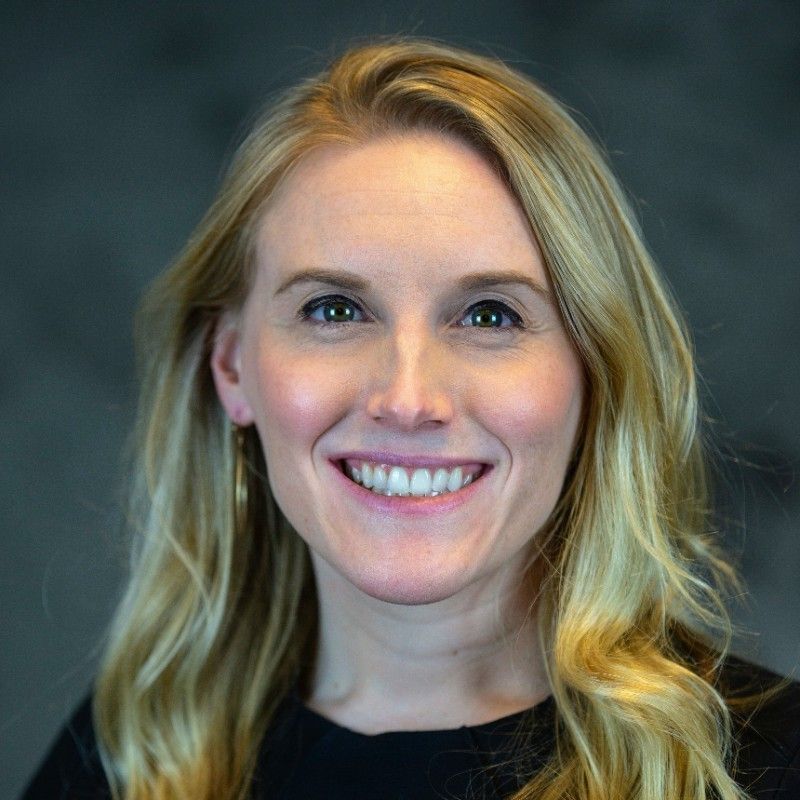ESG & Decarbonizing Estate Forum - Early Speaker Insights
)
![]() Holly Neber, CEO, AEI Consultants
Holly Neber, CEO, AEI Consultants
1. “It’s an election year” – as an ESG leader, how are you thinking about/planning for this? Or are you thinking about it at all?
While the regulatory environment certainly matters, property value is the ultimate focus of investors. The more we can demonstrate that sustainability and resilience increase property value, the more we will generate progress regardless of what happens in politics.
2. The term “ESG” has become a political hot-button issue, though much of the work that falls under the general “ESG” banner continues out of necessity. Is your organization reframing “ESG” work in a way that allows the work itself to continue without the political pushback?
We see ESG, sustainability and resilience in terms of enhancing and preserving property value and demonstrating sound investment and management practices. Smart investors are using this information to make good decisions, and we're seeing it from global lending institutions to local investors. Framing it in terms of value preservation and enhancement is helpful and also accurate.
3. What can organizations do to better support social initiatives (i.e., the “S” in ESG)? What would you like to see more of, whether within your own organization or more broadly?
For me, access to nature has a profound positive impact on wellness and mental health. I'd like to see continued progress towards regenerative design and thinking, along with building designs that incorporate nature and connect us to our sense of place.
 Ashley Besic, Senior Associate, Market Transformation, Building Decarbonization Coalition
Ashley Besic, Senior Associate, Market Transformation, Building Decarbonization Coalition
1. “It’s an election year” – as an ESG leader, how are you thinking about/planning for this? Or are you thinking about it at all?
I'm mindful of the potential impact of the election year on our initiatives. While political shifts may influence regulatory environments and public perception, our focus remains on driving sustainable practices that can be achieved in different political contexts. We continue to plan and adapt our strategies to uphold our commitment to neighborhood-scale building decarbonization. Neighborhood-scale decarbonization is a strategy of a managed, safe, equitable transition from the gas system to clean energy systems in buildings. We recommend two pathways to achieve it: the electric appliance adoption pathway and thermal energy network (TEN) pathway. Each offers innovative solutions for both new construction and existing buildings, complemented by weatherization and energy efficiency measures to reduce energy use and costs. Much of my work focuses on TENs. We find TENs bring politically diverse stakeholders into rare alignment. You have gas utilities sitting down with environmental justice advocates, developers and union leaders working with environmentalists, and these partnerships create powerful coalitions that can transcend traditional political attitudes. Thermal energy networks are also present in both blue and red states (in fact, some of the most exciting private developments installing TENs are in Texas and Florida).
Ultimately, when we advocate for neighborhood-scale building decarbonization, we are advocating for affordable energy for everyone, healthy indoor air for everyone, and good jobs, especially for gas workers who might get left behind. These values and principles will endure past this election year and are relevant to everyone in the real estate community. Yes, unlocking TENs’ potential at scale will require utility investment, and that will likely require state legislative action to amend the “obligation to serve” and allow utilities to
sell thermal energy. Any legislative action requires different strategies for different contexts, and we are always mindful of state and local politics. I help lead and support a national coalition of advocates interested in bringing the thermal energy network pathway into their own states. This coalition represents 19 states, plus D.C., and they are not politically homogeneous by any means. But all of their
own coalitions and constituents have plenty of enthusiasm and we aim to support them with their own strategies for advocacy, organizing, and policy that make sense for their own political contexts.
2. The term “ESG” has become a political hot-button issue, though much of the work that falls under the general “ESG” banner continues out of necessity. Is your organization reframing “ESG” work in a way that allows the work itself to continue without the political pushback?
Despite the political connotations surrounding the term "ESG," our organization frames our work to emphasize its intrinsic value beyond political discourse. We sometimes refer to ourselves as a “pathfinder.” We are a big tent: we work with policymakers, industry, workers, advocates, and consumers. Our approach has always been to devote time and resources to developing productive relationships even between unlikely allies. By highlighting the tangible benefits of sustainability practices, such as risk mitigation, operational efficiency, and stakeholder engagement, we ensure that our initiatives can continue without being overshadowed by political pushback. For example, we are committed to promoting neighborhood-scale building decarbonization pathways, which integrate energy-efficient appliances and thermal energy networks to improve sustainability in new and existing buildings on a block-by-block, neighborhood-by-neighborhood, and community-by-community level. The logic behind neighborhood-scale decarbonization is that it structurally integrates equity into building
decarbonization. It is a strategy to include everyone: workers have job security as they transition to clean energy, entire neighborhoods shift to healthy and climate-resilient homes, and low-income households who may not be able to afford electrification on their own do not get left behind.
3. We talk a lot about greenhouse gas emissions, carbon reduction, and energy efficiency, but we don’t talk nearly enough about water. How are you considering issues of water management, conservation, and resilience as part of your overall ESG strategy?
Water management, conservation, and resilience are integral components of our overall ESG strategy. For example, the need to cool buildings to safe, comfortable interior temperatures corresponds to multiple sustainability challenges, including reducing emissions, adapting to extreme temperatures, and conserving water. We recognize the importance of addressing water-related challenges, such as scarcity and quality, to ensure the long-term sustainability of our operations and communities. One exciting initiative I am working on is compiling data, for the first time, that demonstrates the water savings of TENs when they replace chillers and cooling towers in commercial and institutional buildings. This will be particularly worthwhile for developers and policymakers in drought-prone areas.
Incorporating water considerations into our initiatives aligns with our commitment to holistic sustainability practices, including the implementation of neighborhood-scale building decarbonization pathways that prioritize efficient water use and conservation through the deployment of TENs.
5. What can organizations do to better support social initiatives (i.e., the “S” in ESG)? What would you like to see more of, whether within your own organization or more broadly?
Organizations can better support social initiatives by prioritizing diversity, equity, and inclusion (DEI) efforts, fostering inclusive workplace cultures, and engaging with local communities to address social inequalities. Within my team, I manage our “Making Equity Real” process, which is our way of being intentional about identifying ways we can actively work toward a future in which all people are benefitting equitably from a healthy, affordable, and decarbonized world. We are holding ourselves and each other accountable by identifying and working toward (and achieving!) 90-day, one-year, and three-year equity goals. Agreeing on and writing down our equity values and principles has also given us guidance in all of our programmatic efforts.
6. On a lighter note, any fun plans for the summer?
I'm looking forward to spending time with my two little boys outdoors, exploring nature trails, and enjoying time with friends and family. It's essential to recharge and find moments of joy amidst our busy schedules, so I'm excited for some relaxation and rejuvenation during the summer months.
 Tanja Milosevic, AVP, ESG, Grosvenor
Tanja Milosevic, AVP, ESG, Grosvenor
“It’s an election year” – as an ESG leader, how are you thinking about/planning for this? Or are you thinking about it at all?
As a leader in sustainability, an election year presents unique challenges and opportunities. Political climates can shift priorities and public perception of ESG initiatives, as well as the availability and funding of incentive programs. During an election year, I focus on several key areas:
- Scenario Planning: Anticipating different political outcomes and their potential impacts on regulatory requirements, funding opportunities, and stakeholder expectations.
- Stakeholder Engagement: Strengthening relationships with stakeholders, to work together to advocate for the importance of sustainable practices regardless of political changes.
- Communication Strategy: Ensuring our messaging is clear and non-partisan, emphasizing the long-term economic and societal benefits of our ESG initiatives.
- Regulatory Compliance: Staying updated on potential regulatory changes and preparing to adapt our strategies accordingly.
By being proactive and adaptable, our focus remains on continuing to drive our sustainability goals forward, regardless of the political landscape.
The term “ESG” has become a political hot-button issue, though much of the work that falls under the general “ESG” banner continues out of necessity. Is your organization reframing “ESG” work in a way that allows the work itself to continue without the political pushback?
Given the politicization of the term “ESG,” we strategically reframed our sustainability efforts to focus on the tangible benefits and necessities of these practices:
- Terminology: While "ESG" remains a part of our internal lexicon, we emphasize terms like "sustainability," "responsible business practices," and "providing environmental, social and commercial benefit" to avoid political connotations.
- Data-Driven Results: Highlighting the financial, operational, and reputational benefits derived from our ESG initiatives, showing clear ROI.
- Case Studies and Success Stories: Sharing concrete examples of how ESG practices and initiatives have led to improved outcomes, such as reduced costs and emissions through energy efficiency or enhanced employee satisfaction through our DEI committee and other social and volunteering programs.
- Collaboration and Transparency: Working closely with industry groups and maintaining transparency to build broader support and understanding of our initiatives and goals.
This approach allows us to continue our vital work without getting mired in political debates.
We talk a lot about greenhouse gas emissions, carbon reduction, and energy efficiency, but we don’t talk nearly enough about water. How are you considering issues of water management, conservation, and resilience as part of your overall ESG strategy?
Water management is an important component of our overall sustainability strategy, and we address it in several ways:
- Tracking and Assessment: Monitoring water consumption to understand and optimize our water usage across all operations.
- Conservation Programs: Implementing programs to reduce water consumption, such as upgrading to water-efficient fixtures and promoting conservation practices at our assets.
- Resilience Planning: Developing strategies to ensure our operations are resilient to water scarcity and climate change impacts, including investing in technology that enhances water security.
By prioritizing water management, we contribute to the sustainability of our operations and our communities.
How are you thinking about various new climate disclosure/reporting requirements already in effect and soon to be implemented, from the temporarily-on-hold new rules from the SEC passed earlier this year, to California’s much more aggressive rules that will have ripple effects far outside the state itself, and even global disclosure requirements like ISSB and SFDR?
Grosvenor is a private company, but the evolving landscape of climate disclosure and reporting requirements requires a dynamic and proactive approach nonetheless:
- Compliance Framework: Establishing a robust compliance framework to ensure we meet the requirements of legislation applicable in all the markets in which we operate.
- Integrated Reporting: Enhancing our reporting systems to integrate these various requirements, providing comprehensive and consistent data.
- Capacity Building: Investing in training and resources for our team to stay informed about new regulations and best practices.
- Stakeholder Engagement: Communicating transparently with stakeholders about our compliance efforts and the implications of new regulations on our operations.
By staying ahead of regulatory changes, we can ensure compliance and maintain the trust of our stakeholders. This being said, while efforts are being made to standardize frameworks to avoid overlap and duplication of work, there is still some distance to go. As sustainability professionals, it can be very easy to spend more time reporting than doing and we’re very mindful of how to stay in compliance while still moving forward toward our emissions reduction goals.
What can organizations do to better support social initiatives (i.e., the “S” in ESG)? What would you like to see more of, whether within your own organization or more broadly?
Providing social benefit is one of our company pillars and to support this, Grosvenor takes several steps:
- Community Engagement: Engaging with local communities to understand their needs and develop projects that address social issues such as childcare space, affordable art space, economic development, and providing social and/or affordable housing.
- Diversity and Inclusion: Promoting diversity and inclusion within Grosvenor through recruitment, retention, and development programs that create equitable opportunities for all employees. Additionally, Grosvenor’s employee-led DEI Committee, which I chaired in 2022-2023, has been operating since 2018 and currently includes subgroups dedicated to the topics of mental health and wellness, neurodiversity, disability, culture and education, and LGBTQ+, gender and racial equity.
- Employee Well-being: Implementing policies and programs that support employee well-being, such as mental health resources, flexible work arrangements, paid volunteer time, generous parental leave, and comprehensive benefits.
- Transparency and Accountability: Being clear about our social impact focus areas of housing, education and supply chain diversity and regularly reporting on progress.
Within Grosvenor, we strive to lead by example, creating a culture that values social responsibility and actively works to make a positive impact in the communities in which we operate.
On a lighter note, any fun plans for the summer?
Summer is the best time to be in Vancouver, BC, Canada where I live and I plan on spending it kayaking, hiking, enjoying beach activities, checking out various street and music festivals, and enjoying the food and beverage culture on a variety of sunny patios.
 Carol Samaan, VP, Associate General Counsel and Corporate Secretary, Healthpeak
Carol Samaan, VP, Associate General Counsel and Corporate Secretary, Healthpeak
2. The term “ESG” has become a political hot-button issue, though much of the work that falls under the general “ESG” banner continues out of necessity. Is your organization reframing “ESG” work in a way that allows the work itself to continue without the political pushback?
Earlier this year and as part of a comprehensive long-term strategy, we aligned our practices around our “corporate impact,” which we formerly used to call “ESG.” This shift in title signifies our transition to a more comprehensive approach to corporate responsibility and sustainability. It underscores our commitment to not only environmental, social, and governance factors but also our broader impact on stakeholders and communities.
4. How are you thinking about various new climate disclosure/reporting requirements already in effect and soon to be implemented, from the temporarily-on-hold new rules from the SEC passed earlier this year, to California’s much more aggressive rules that will have ripple effects far outside the state itself, and even global disclosure requirements like ISSB and SFDR?
We have been preparing for these rules for some time by implementing best practices and forming a solid foundation around data collection, data integrity and transparent reporting. I encourage companies to continue doing the underlying work – the disclosure obligation will continue to evolve but the need to report accurate and transparent information will never go away.
5. What can organizations do to better support social initiatives (i.e., the “S” in ESG)? What would you like to see more of, whether within your own organization or more broadly?
I would like to see intentional focus on social initiatives that will specifically benefit the organization, rather than a one-size-fits-all approach to social initiatives and DEI. Companies should be thoughtful about how they can meaningfully support social initiatives in the real estate space, whether it is by benefiting employees, tenants and customers, business partners, or the communities where we operate.
6. On a lighter note, any fun plans for the summer? We just returned from Rome, and it was delightful!
 Bob Simpson, President and Founder of the Multifamily Impact Council
Bob Simpson, President and Founder of the Multifamily Impact Council
1. The term “ESG” has become a political hot-button issue, though much of the work that falls under the general “ESG” banner continues out of necessity. Is your organization reframing “ESG” work in a way that allows the work itself to continue without the political pushback?
While we must contend with the binary notions that some parties have around ESG, we don’t believe a reframe or rebrand of the concept is necessary. Rather, the key is education and communication of evidence that proves this is not an either/or situation—you can improve resident lives and protect the environment while meeting your fiduciary responsibility. ESG- and Impact-aligned strategies are not only not inherently bad for an investment—they in fact enhance the resilience of investment portfolios.
Multifamily Impact Council was created to develop a set of standards and guidelines that demonstrate, and do a more effective job of communicating, the value of these strategies. This includes how they align with an investment manager’s responsibilities. We aim to ensure that everyone is speaking the same “language” in this space.
We are doing this largely through identifying the reporting metrics that investors can use to quantify the financial benefits of supporting better environmental and social outcomes at the property level. These include the reduction of financial risk (increasing financial resiliency), improving energy efficiency and reducing environmental impact (increasing climate resiliency), and fostering positive growth within the community where the investment is located (social resiliency).
The Multifamily Impact Framework™ breaks Impact—as it relates to the United States multifamily housing industry—down into 7 Principles that together encompass all aspects of ESG:
- Affordability is the foundation of impact. We follow the Federal Housing Finance Agency’s (FHFA) definition of affordability up to the point where 100% of the renters in a property are paying no more than 30% of their income for rent.
- Housing Stability is achieved when a person is 1) not behind on rent or financially burdened to make rent payments, 2) has not moved in the past twelve months for financial reasons, and 3) is not forced to rely on housing shelters or doubling up with another household.
- Economic Health and Mobility is defined by a person’s ability to improve their financial condition and living standards and achieve greater economic mobility while living in their rental unit.
- Resident Engagement ensures that the services and programs provided are 1) consistent with resident priorities, goals, and needs, 2) leverage existing community resources, and 3) create more access to on-site property staff that builds trust with residents.
- Health and Wellness incorporates healthy building design, property management practices and resident services that create living conditions that protect and enhance renters’ physical and mental health.
- Climate and Resiliency covers actions taken to make the property more energy efficient, reduce greenhouse gas (GHG) emissions, increase the use of clean energy, and improve the property and resident resiliency to climate risk.
- Diversity, Equity, and Inclusion ensure that organizations are incorporating DEI policies at the organizational and property level that create more diversity, equity, and inclusivity in the workforce, management team, and ownership structure.
Ultimately, MIC and the Framework strive to help investors better understand how actionable steps aligned with “ESG”—such as supporting renters via affordable rents, housing stability and financial support services, as well as initiatives that reduce the property’s carbon footprint—drive financial performance and reduce risk for long-term investors.
 Rachel Mavrothalasitis, Principal of Reach&Root Partners and Chief Operating Officer for the Multifamily Impact Council
Rachel Mavrothalasitis, Principal of Reach&Root Partners and Chief Operating Officer for the Multifamily Impact Council
What can organizations do to better support social initiatives (i.e., the “S” in ESG)? What would you like to see more of, whether within your own organization or more broadly?
The “S” in ESG is sometimes referred to as “soft” or “squishy,” due to the perception that social impact is subjective, while environmental impact is seen as more easily quantified. While it is easy to understand how folks might arrive at this conclusion, the idea that the “S” is too hard to measure is simply incorrect.
Last year, the Pension Real Estate Association Social Impact Committee put out a guide called What Is the S in ESG? A Guide for Real Estate Investors meant to provide a starting point for real estate operators and investors across the asset-class to understand social factors and begin to incorporate them into their unique investment strategies. I was proud to contribute to that resource and happy to see it receive the attention that it did.
When we narrow within specific subsectors, we can start to become more granular with the critical areas and metrics that constitute meaningful performance. That’s what I love about initiatives the Multifamily Impact Council and the Multifamily Impact Framework™, which seeks to leverage shared industry knowledge to define minimum thresholds for impact performance and reporting. Quantifying the “S” is the first step in ultimately helping our members and their stakeholders direct their focus towards social initiatives that deliver superior outcomes for residents and communities, while also having a positive effect on investment portfolios.
In many instances, that work kicks off with resident engagement and onsite services as a primary mechanism to drive social impact. The Multifamily Impact Council helps property owners implement strategies that match investor expectations in this area. Superior resident services lead to higher resident satisfaction, stability, and improved financial health—which in turn produce longer lengths of stay, and more reliable, on-time payments. We know that not all impact investments have such straight forward and direct linkages between impact performance and financial performance. We feel lucky to be able to help operators and investors identify and measure this interaction.
One of the ways that Multifamily Impact Council is taking a comprehensive look at continuous refinement of the relevant “S” metrics for multifamily is through collaboration with incredible industry leaders like GRESB or the Certified Organization for Resident Engagement & Services (CORES) program, who has led the way for resident services best practice. We continue to leverage and learn from these peers to ensure the multifamily asset allocators and operators are benefiting from benchmarking initiatives across the sector. By doing so, we encourage measurement and transparency, which further drives portfolio and social outcomes. Measuring the “S” may not be easy, but it can be simple.
 Arvin Vohra, CEO, Redapive Inc.
Arvin Vohra, CEO, Redapive Inc.
1: We talk a lot about greenhouse gas emissions, carbon reduction, and energy efficiency, but we don’t talk nearly enough about water. How are you considering issues of water management, conservation, and resilience as part of your overall ESG strategy?
While the conversation around ESG (Environmental, Social, and Governance) has predominantly focused on greenhouse gas emissions, carbon reduction, and energy efficiency, it is crucial that we broaden this dialogue to include water management, conservation, and resilience. At Redaptive, we recognize that water is a vital resource, and its sustainable management is essential for the health of our planet and communities.
Our approach to water management leverages advanced smart metering technologies. By deploying smart meters, we help building owners and operators understand water consumption and develop strategies to improve efficiency is used more efficiently. These smart meters provide real-time data on water usage, enabling precise monitoring and control.
Our data solution is increasingly being adapted to monitor water usage. This granular data allows organizations to identify leaks, inefficiencies, and opportunities for conservation that might otherwise go unnoticed. By providing detailed insights into water usage patterns, we enable our clients to make informed decisions that enhance their water stewardship and mitigate downside risks associated leaks.
At Redaptive, our commitment to sustainability extends beyond energy. By integrating smart metering into our overall ESG strategy, we aim to contribute to a more holistic approach to environmental stewardship that addresses all aspects of resource conservation and resilience.
2: How are you thinking about various new climate disclosure/reporting requirements already in effect and soon to be implemented, from the temporarily-on-hold new rules from the SEC passed earlier this year, to California’s much more aggressive rules that will have ripple effects far outside the state itself, and even global disclosure requirements like ISSB and SFDR?
The evolving landscape of climate disclosure and reporting requirements presents challenges and opportunities for organizations committed to sustainability. At Redaptive, we help organizations proactively adapt to these changes to not only ensure compliance but also to enhance the business impact of their ESG initiatives.
Although temporarily on hold, the new SEC rules signify a shift towards more rigorous climate disclosure standards in the United States. Similarly, California's aggressive regulations, which are likely to influence policies beyond the state's borders, highlight the increasing importance of regional regulations. On a global scale, frameworks like the ISSB (International Sustainability Standards Board) and SFDR (Sustainable Finance Disclosure Regulation) are setting new benchmarks for climate reporting.
At Redaptive, we view these developments as an opportunity for organizations to strengthen their ESG profile and demonstrate their leadership in sustainability. Our data solution plays a pivotal role in supporting this effort. By providing precise, real-time data on energy and water usage, we empower organizations to meet these stringent reporting requirements accurately and confidently. This data-driven approach facilitates compliance and enables our clients to set and achieve ambitious sustainability targets.
We are also investing in education and collaboration. We work closely with our clients to help them understand and navigate these new regulations, offering support and expertise to ensure they are well-prepared. By fostering a culture of transparency and accountability, we aim to lead by example and inspire others to elevate their ESG practices.
In summary, while the new climate disclosure and reporting requirements present significant challenges, they also provide an impetus for innovation and improvement. At Redaptive, we are committed to leveraging our technology and expertise to help organizations comply with these regulations and thrive in a more sustainable and transparent future.
 Brenna Walraven, Executive Strategic Advisor, RE Tech Advisors
Brenna Walraven, Executive Strategic Advisor, RE Tech Advisors
“It’s an election year” – as an ESG leader, how are you thinking about/planning for this? Or are you thinking about it at all?
The election isn’t driving my thinking or decision making. While the overall economy is incredibly healthy in many ways, real estate still has some pain to work through tied to valuation, transactions, and overall repricing. Some sectors are certainly better than others, but all sectors had negative overall returns (per NCREIF) in 2023 and that has a dampening effect on investments in sustainability, climate resilience, and decarbonization. The good news: this too shall pass as we’re likely “at or near the bottom”, and things should be moving more positively in the next 12 months or so.
The term “ESG” has become a political hot-button issue, though much of the work that falls under the general “ESG” banner continues out of necessity. Is your organization reframing “ESG” work in a way that allows the work itself to continue without the political pushback?
Absolutely meeting people where they’re at on this topic such that we may speak in terms “sustainability” vs. “ESG”. But efficiency pays. Always has. Always will. The work is fundamentally about efficiency, risk mitigation, and enhanced performance. So, while we may call it compliance instead of “climate transition risk mitigation”, the activities in large part are the same. Too the “red state” vs. “blue state”, when it has come up, has been acknowledged that the folks representing “red state” positions are 1% to 2% of the investors/stakeholders, and the other 98% to 99% are firmly focused on what needs to happen to preserve value with lower overall risk. In short, there is still a realization that these efforts are about improving financial performance and risk adjust returns.
We talk a lot about greenhouse gas emissions, carbon reduction, and energy efficiency, but we don’t talk nearly enough about water. How are you considering issues of water management, conservation, and resilience as part of your overall ESG strategy?
Great question, and one that has been coming up more. Not enough but more. Water has not historically been priced to naturally get stakeholders, including investors and real estate professionals, leaning in on water efficiency, management, and reporting. But this is changing as there’s a growing realization about the scarcity of water. Too, water is part of energy as we use energy to move water. As such, expect there to be growing interest in water, particularly where there are scarcity issues associated with access or droughts or both.
How are you thinking about various new climate disclosure/reporting requirements already in effect and soon to be implemented, from the temporarily-on-hold new rules from the SEC passed earlier this year, to California’s much more aggressive rules that will have ripple effects far outside the state itself, and even global disclosure requirements like ISSB and SFDR?
Big focal point as these requirements keep coming. The way we discuss and think about it is that we know that these requirements are coming but given the temporary hold on the SEC rules, we have been given a little more time to plan and prepare. Our goal is to better understand how to think about, assess, and plan for these types of disclosures. Materiality, for example, is taking on more important meaning in the context of the SEC rules and likely many others. The good news is there is a lot of consolidation and consensus building around the disclosures to some degree – SASB is now part of ISSB, ISSB/IFRS are fundamentally aligned around the Task Force on Climate Related Financial Disclosures (TCFD). Further, reporting benchmarking frameworks like GRESB also are aligning around TCFD, IFRS, and SFDR. Alignment makes it easier for organizations to be able to report more easily. Bottom line is the requirements for disclosure have fundamentally changed and even if a company is not public or regulated by the SEC, investors are going to expect this higher level of disclosure.
What can organizations do to better support social initiatives (i.e., the “S” in ESG)? What would you like to see more of, whether within your own organization or more broadly?
“S” is fundamentally about engagement. Engagement internally with teams, senior leadership, and other key stakeholders. Externally, engagement is about customers, tenants, residents, guests, and shoppers, but it’s also about investors. This is not to leave out our public brethren like city/county resilience and sustainability offices/representatives, building code/permitting, advocacy and public policy advocates will all need engagement. Activities certainly include satisfaction surveys but also materiality surveys/focus groups and/or discussions. Having Sustainability Councils is pretty common, but we are still seeing companies have a “Social Committee” that looks at everything from health and wellbeing, mentoring, DEI, and other topics. Ultimately, culture is what this is all about – and culture matters to employees and also to clients. So, we still see that many well-respected firms will continue to make investments in developing an increasingly more inclusive culture. Engagement can also expand quickly, but the fundamentals still come down to knowing your internal and external stakeholders so as to properly support each, as well as drive value for all.
On a lighter note, any fun plans for the summer?
More time outdoors, in the water, at the beach, and in the mountains!
 Zlatan Menkovic, CEO & Founder, Scaler Global Inc.
Zlatan Menkovic, CEO & Founder, Scaler Global Inc.
1. "It's an election year" – as an ESG leader, how are you thinking about/planning for this? Or are you thinking about it at all?
At Scaler, we see ESG in commercial real estate growing and progressing regardless of the political climate in the US. While local and federal regulations and policies will continue to change, our focus remains steadfast as investor requirements drive the demand, and that demand isn't slowing down. Metrics on energy, water, waste, and emissions are becoming baseline business standards, much like financial metrics. We continue to support our clients in meeting these requirements, ensuring they stay ahead of the curve in a competitive CRE market. We are run an agile team/processes to ensure we meet the evolving analytics and reporting requirements for our clients.
The term “ESG” has become a political hot-button issue, though much of the work that falls under the general “ESG” banner continues out of necessity. Is your organization reframing “ESG” work in a way that allows the work itself to continue without the political pushback?
We stand firm in our commitment to energy, social, and governance principles. ESG considerations are integral to every stage of the commercial real estate investment lifecycle. We believe in the mission behind our work. Understanding, analyzing, and sharing ESG metrics & strategy allow our clients to make more informed portfolio and asset management decisions. The general trend across all industries is to collect more and better data. What gets measured can get managed and eventually lead to a competitive advantage. The complexity of real estate investment today demands better tools and that’s where Scaler comes in.
We talk a lot about greenhouse gas emissions, carbon reduction, and energy efficiency, but we don’t talk nearly enough about water. How are you considering issues of water management, conservation, and resilience as part of your overall ESG strategy?
Water management is indeed a challenging area. While we've made significant strides in collecting and assessing water data, there's still much work to be done. Our automated water analytics and reporting tools are only as effective as the data they process. That's why we're focused on enabling flexible data collection tools that help our clients establish a baseline, even if it's just a starting point. We are also consistently developing & refining estimations for data gaps to bridge the reporting needs while the industry catches up.
How are you thinking about various new climate disclosure/reporting requirements already in effect and soon to be implemented, from the temporarily-on-hold new rules from the SEC passed earlier this year, to California’s much more aggressive rules that will have ripple effects far outside the state itself, and even global disclosure requirements like ISSB and SFDR?
Climate disclosure and reporting requirements, both in the US and globally, are constantly evolving. With this in mind, we've designed Scaler's data architecture to be flexible and future-proof. Our system is built to adapt to new reporting requirements, ensuring our clients can stay compliant without duplicative data collection processes. By creating Scaler’s data hub from the most granular data level upwards, we ensure our outputs are scalable, agile, and robust. Our advanced alert system helps maintain high data quality and reliability, identifying errors and guiding users to correct mistakes swiftly to meet reporting requirements. We continuously update Scaler with the latest requirements from local ordinances such as LL97, BEPS, BERDO, and other significant local & federal disclosures to alleviate the burden on our clients as they work hard to stay compliant with evolving regulations.
What can organizations do to better support social initiatives (i.e., the “S” in ESG)? What would you like to see more of, whether within your own organization or more broadly?
The "S" in ESG can be daunting. To tackle this, it's crucial to clearly define what's in scope for your team and set realistic targets. Starting with quick wins such as tenant surveys or collecting baseline qualitative metrics can be effective first steps. Collecting these metrics in a central location and reporting on them helps organizations understand their social impact and drive meaningful improvements. We built our Governance tool with this in mind to help our clients store, track, and visualize company level qualitative information, applicable to Social KPIs as well as the GRESB Management components. We are working with industry leaders in the ‘Impact Investing’ space specifically to develop analytics that reflect their investment strategy and to determine materiality across stakeholders.
On a lighter note, any fun plans for the summer?
Absolutely! We have a team offsite planned in Croatia. It's the first time we'll have the entire Scaler team together, and we're all looking forward to it. It's going to be a great opportunity to collaborate in person and enjoy some well-deserved time together!
 Gabe Schwartz, VP, Sales & Marketing, SitelogIQ
Gabe Schwartz, VP, Sales & Marketing, SitelogIQ
3. We talk a lot about greenhouse gas emissions, carbon reduction, and energy efficiency, but we don’t talk nearly enough about water. How are you considering issues of water management, conservation, and resilience as part of your overall ESG strategy?
SitelogIQ recommends a prioritization exercise based on water scarcity, water cost, risk of fines / other compliance, and rebate availability. We recommend pursuing low-hanging fruit like irrigation controls and toilet retrofits to score some wins while building a more comprehensive approach. We also factor in long-term water supply concerns when evaluating macro trends for regional investment opportunities.
5. What can organizations do to better support social initiatives (i.e., the “S” in ESG)? What would you like to see more of, whether within your own organization or more broadly?
We look for opportunities to support E and S at the same time. For example, EV charging decarbonizes scope 3 "E" and also provides cleaner air to disadvantaged communities that typically live close to highways and truck traffic, supporting "S." We also take steps to reduce implicit bias from recruiting processes.
 Kelly Hagarty, Director of ESG, Stok
Kelly Hagarty, Director of ESG, Stok
1. The term “ESG” has become a political hot-button issue, though much of the work that falls under the general “ESG” banner continues out of necessity. Is your organization reframing “ESG” work in a way that allows the work itself to continue without the political pushback?
The scrutiny of ESG has pushed the industry to move from broad statements and goals to detailed strategies backed by documentation. Whether clients call it ESG, Sustainability, Corporate Governance, or something else, Stok supports clients with strategy and implementation. By conducting a materiality assessment and peer analysis, and analyzing reporting requirements, we develop a strategy that meets the needs of each client, prioritizing the most impactful and material areas. Sometimes this means foundational items like policy development and other times it is more advanced asset-level work like electrification or decarbonization plans.
4. How are you thinking about various new climate disclosure/reporting requirements already in effect and soon to be implemented, from the temporarily-on-hold new rules from the SEC passed earlier this year, to California’s much more aggressive rules that will have ripple effects far outside the state itself, and even global disclosure requirements like ISSB and SFDR?
Stok is educating clients on these regulations, building up clients’ internal knowledge and skills, and developing the foundations and data management procedures so our clients are ready to report when the time comes. We work with clients to conduct greenhouse gas (GHG) inventories and effectively collect necessary data as well as identify alignment and synergies between the requirements.
Register for IMN's ESG & Decarbonizing Real Estate Forum (July 10-11 in Dana Pt) - Register Here

